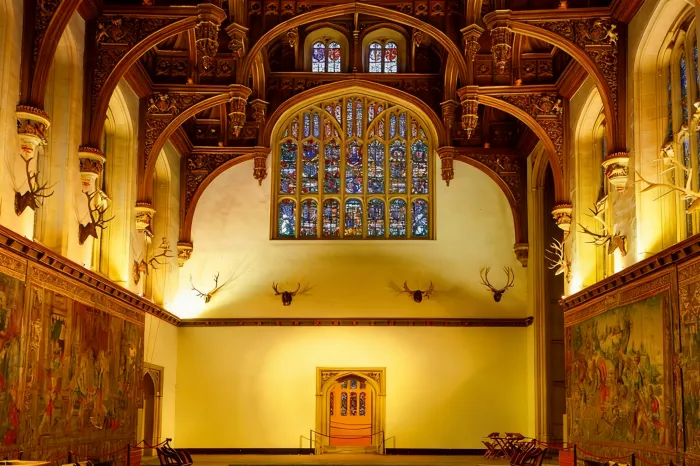The King James Bible: Birth of a Literary Superstar
If you ever find yourself debating some of the biggest pop culture influences in history and someone says, “It’s all about The Beatles,” try gently whispering: “You forgot the King James Bible.” You’ll likely induce a stunned silence, or at least a robust discussion on the power of literary masterpieces. Because when it comes to epic English contributions, the King James Version (KJV) of the Bible—published in 1611—is less Beatles, more OG Shakespeare with a holy twist.
But how did this iconic text land among us common folk? Did King James himself lock himself away with a stack of manuscripts and some quills? Not quite. If anything, the story of the King James Bible’s creation is one of committees, academia, just a smidge of royal drama, and a seven-year translation marathon that would put any modern group project to shame.
Setting the Stage: A King, Some Turmoil, and Warring Bibles
Let’s rewind to the early 17th century, when England’s throne was freshly occupied by King James I—a man with Renaissance dreams of grandeur, strong opinions on religious unity, and a colorful political backdrop just begging for a bit of spiritual and literal reform. One of his first leadership moves was, in fact, not introducing a new line of tiaras, but deciding to unite his religious subjects under a single, definitive translation of the Bible.
Why? Well, everyone seemed to be reading different versions. There was the Bishops’ Bible in churches and the Geneva Bible at home, creating what can only be described as a spiritual case of “one foot in, one foot out.” The Geneva Bible, favored by Protestants and filled with marginal notes that occasionally questioned things like the divine right of kings, was a thorn in James’ side. The Bishops’ Bible, meanwhile, wasn’t winning any popularity contests outside Sunday services.
King James, recognizing an opportunity for stability (and perhaps a little ego-boosting monarchy branding), called together the Hampton Court Conference in 1604, inviting Church authorities and Puritans to air their theological laundry. He rejected their requests—except for one: a new, uniform English Bible translation.
Teamwork Makes the Dream Work: The Translators
And so it began. Rather than James donning a scholar’s hat, he commissioned SIX committees—drawn from England’s leading universities, Oxford and Cambridge, plus Westminster—to tackle the mammoth task. Forty-seven hand-picked scholars and churchmen, ranging from Puritan reformers to traditional Anglican bishops (and at least one infamous explorer/travel writer), got busy translating ancient Hebrew, Greek, and Aramaic. And no, contrary to persistent internet legend, Shakespeare didn’t sneak into the party. (They were looking for Biblical clarity, not cryptic sonnets.)
The process? Not exactly speed-reading through the Torah. It ran like a relay race: Each committee took a section of the Bible, translated alone, pooled their efforts, debated and nitpicked, reviewed again, read the entire thing aloud (the first-ever Bible read-through party?), and cross-checked with prior translations—the Bishops’ and Geneva Bibles, and, most of all, William Tyndale’s groundbreaking early-1500s translations. In fact, up to 80% of the King James Version’s wording is thought to come from Tyndale, who, for his pains, ended up losing more than just job satisfaction.
1611: Out Was Born a Bible, In Came Some Typos
The translation process—so academic it would have made modern peer review committees look like game night—dragged on for seven years. Finally, in 1611, England received its very first authorized King James Version. The reception? Let’s say, less red-carpet and more critical murmurs. People didn’t immediately ditch the Geneva Bible, and the KJV’s debut was marred by infamous printing errors. The most famous? The 1631 “Wicked Bible,” whose text accidentally read: “Thou shalt commit adultery.” Oops.
Regardless, the KJV persisted—its poetic cadences, comprehensive translation, and lack of contentious margin notes marked it as something extraordinary. As printing technology improved, the KJV’s reach exploded. By the mid-1600s, it edged out its competitors. And as centuries passed, it became not just the mainstay of Anglican liturgy but a linguistic backbone for everything from presidential inaugurations to reggae lyrics (thanks, Jamaica).
Cultural Legacy: From Prose to Pop Culture
So, how did the King James Bible become the rockstar of all English translations? For one, it wasn’t immediately universally loved but, like most cult classics, grew on people. The language itself—or, shall we say, King James’s celebrity ghostwriters—offered up phrases that now sprinkle everyday conversation: “the skin of my teeth,” “the powers that be,” “rise and shine,” “go the extra mile.” Even Abraham Lincoln’s immortal phrase “Four score and seven years ago” owes its style to KJV roots.
The KJV also traveled across the world with English traders, missionaries, and colonizers, ending up in schoolbooks, legal documents, and millions of homes from London to Calcutta. Generations learned their English from the KJV—sometimes not even knowing there were other translations. For some, it was THE Bible; for others, a foundational text in broader movements, including reggae and Rastafarian culture, which embraced its blend of authority and redemption.
But, not unlike a hit TV show from the ‘70s, the KJV came with complexities—used for both good and not-so-good, supporting both liberty and control. Over time, scholars found some passages outdated (“maiden” or “virgin” for Mary, anyone?), and modern translations proliferated. Still, a sizable crowd insists the KJV is the only Bible worth its salt (the “King James Onlyists”), keeping its legacy alive.
Why the King James Bible Endures: The Ultimate Group Project
Ultimately, the King James Bible’s staying power is owed to its mix of majestic language, literal translation, and sheer historical momentum. Its translation method—group effort, endless earnest debate, constant revision, read-alouds, and a dash of high drama—created not just a document, but a defining cultural artifact. It’s a historical group project that, instead of collapsing in a flurry of last-minute edits, delivered a lasting monument.
When was the King James Bible created? Officially, 1611. But its roots stretch from medieval underground movements, through the fires of Reformation, to the academic hallowed halls and the royal courts of Jacobean England. The next time someone quotes “fight the good fight,” you’ll know—it all began with a king, some scholars, and the greatest translation group project in history.
And King James? He may not have written a single verse himself, but he certainly knew how to get the right people in the room. For that, history will always keep him crowned king of literary commissioning.
So here’s to committees, group chat debates, and seven-year projects that (sometimes) change the world. Would the King James Bible have survived Twitter? We may never know. But 400 years later, its words still tweet, post, and echo on.




























